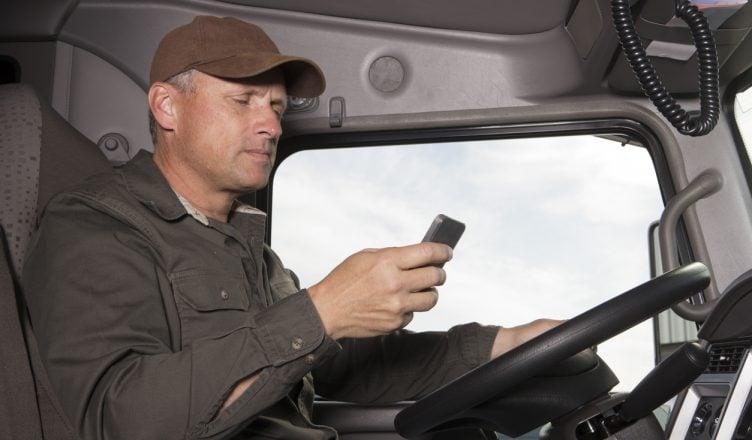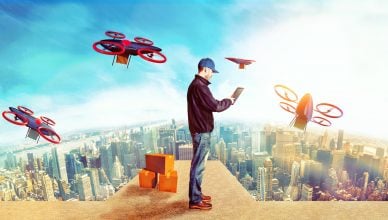According to a report, about nine people are killed every day in the US due to car crashes caused by distracted drivers. So, distracted driving could be deadly. And it’s not just the drivers who are at risk; the passengers, pedestrians, and cyclists are also at risk.
Also, every car crash can damage your brand reputation and put a financial strain on your business. In 2012, Coca Cola was forced to pay a whopping $21 million to a woman who was hit by one of its drivers. Thus, even when a crash doesn’t cause any fatalities, property damage and legal expenses can cost you tens or even hundreds of thousands of dollars.
What Causes Distracted Driving?
There are three main types of distraction:
- Visual: When a driver takes his or her eyes off the road.
- Manual: When a driver takes his or her hands off the wheel.
- Cognitive: When a driver takes his or her mind off driving.
Sending text messages, talking on a cell phone, changing the radio settings, eating, and drinking while driving are a few examples of distractions. Holding your phone to text is especially dangerous as it combines all three types of distraction. In fact, one out of four car accidents in the US is caused by texting while driving.
Fatigue can also be distracting. It is difficult for a person who has been driving down the highway for more than eight hours to maintain his or her concentration and focus on the road. According to the Transport Accident Commission (TAC), around 20% of fatal road accidents involve driver fatigue, and young drivers, shift workers, and drivers with sleep disorders have the greatest risks.

Inefficient route planning often contributes to a driver’s fatigue. For example, if a driver takes a longer route due to poor planning, he or she will be more fatigued than regular delivery drivers or field reps.
Dynamic delivery demands also cause driver fatigue. According to a survey, 56% of customers aged 18 to 34 expect same-day deliveries. This puts added pressure on the drivers to drive faster and work longer, increasing the chances of them getting fatigued when overworked.
The current Corona pandemic has only added more pressure by increasing the delivery requirements more than ever.
Want To See For Yourself How Route4Me Can Boost Your Profits?

How Can Artificial Intelligence-Powered Driving Technology Help?
Clearly, distracted driving is a headache for every field service business. And, the rising demands of same-day and even same-hour deliveries caused many delivery businesses to look out for technology-enabled options, such as drone deliveries, instead of staying old-school. The deadly Corona pandemic has contributed even more to it.
Several automakers and technology companies have started developing driving technology solutions that are powered by Artificial Intelligence (AI) and aimed at reducing deaths and injuries caused by road distractions. They are using big data, AI, and machine learning in the automobile industry to continuously improve the accuracy of risk detection and alert drivers at the right moment or do what is necessary to avoid an accident. We discuss some of these vehicle technology advancements below.
Forward Collision Warning
A forward-collision warning (FCW) system is an advanced safety technology that monitors a vehicle’s speed, the speed of the vehicle in front of it, and the distance between the vehicles. If the vehicles get too close due to the speed of the rear vehicle and a crash is imminent, the AI-powered FCW system warns the driver of the rear vehicle so that he or she can apply the brakes or take evasive action like steering the car in another direction to prevent a potential crash.
Lane Departure Warnings
Even a momentary lapse in concentration can cause a driver to unintentionally stray from the lane. A lane departure warning (LDW) system uses a video camera to detect lane markings in front of the vehicle and monitor the vehicle’s position in its lane. When the AI technology detects that the vehicle is about to unintentionally move out of the lane, it warns the driver, for example by vibrating the steering wheel. The system does not issue a warning when the driver activates the turn signal to change lanes deliberately.
Pedestrian Collision Warning
Any AI-powered system is intelligently designed and can detect objects in the vehicle’s path and, depending on the movement, understand the difference between a static object and a moving object. If the moving objects are not equivalent to the size of another vehicle, they will be identified as pedestrians or motorcyclists. The system can also detect walking pedestrians, motorcycle riders, and even cyclists if they are in the vehicle’s proximity. Accordingly, the system will then warn the driver of an imminent collision.
Automatic Emergency Braking
Automatic emergency braking (AEB) systems can detect an impending forward crash with another vehicle in time to avoid or mitigate the crash. Such AEB systems use sensors to detect obstacles in front of the car and assess whether a collision is likely. The unit first warns the driver that a collision is going to happen and that they need to brake, using dashboard warning lights or an audible alarm. If the driver fails to respond, the autonomous part of the system kicks in and applies the brakes automatically.
Driver Monitoring Systems
This is one of the latest examples of AI in cars. Driver monitoring systems (DMSs) use facial recognition technology-enabled cameras and sensors to identify signs of driver distraction and fatigue. Some DMSs even offer eye tracking and driver voice analysis to make sure that the driver’s attention is on the road. If not, the system notifies the driver.
Route Optimization Software
An AI-powered route optimization software helps plan quickest routes while factoring in weather, traffic, sunrise and sunset times, one-ways, and more critical constraints. It then shares the routes with your drivers instantly. In this way, they will have better routes with last mile driving directions and would be able to cover many stops, without getting fatigued or driving aggressively to show up on time and meet targets. Also, there will be no instances of drivers getting lost and texting or calling you for directions.
The best route planners even come with GPS tracking software [GPS tracking explained] that helps your drivers get rid of another need for texting, as it lets you see in real-time where your drivers are, without having to ask them for their locations.
Conclusion
The world is changing and AI in the automotive industry is getting smarter which is good news because autonomous AI can help respond quickly, using real-world data points generated through numerous sensors, and assist drivers in avoiding crashes. That would save lives.
So, what’s your view about the impact of AI-powered driving technology in the supply chain to keep drivers stay focused? Please feel free to leave your comments below.
Want To See For Yourself How Route4Me Can Boost Your Profits?




